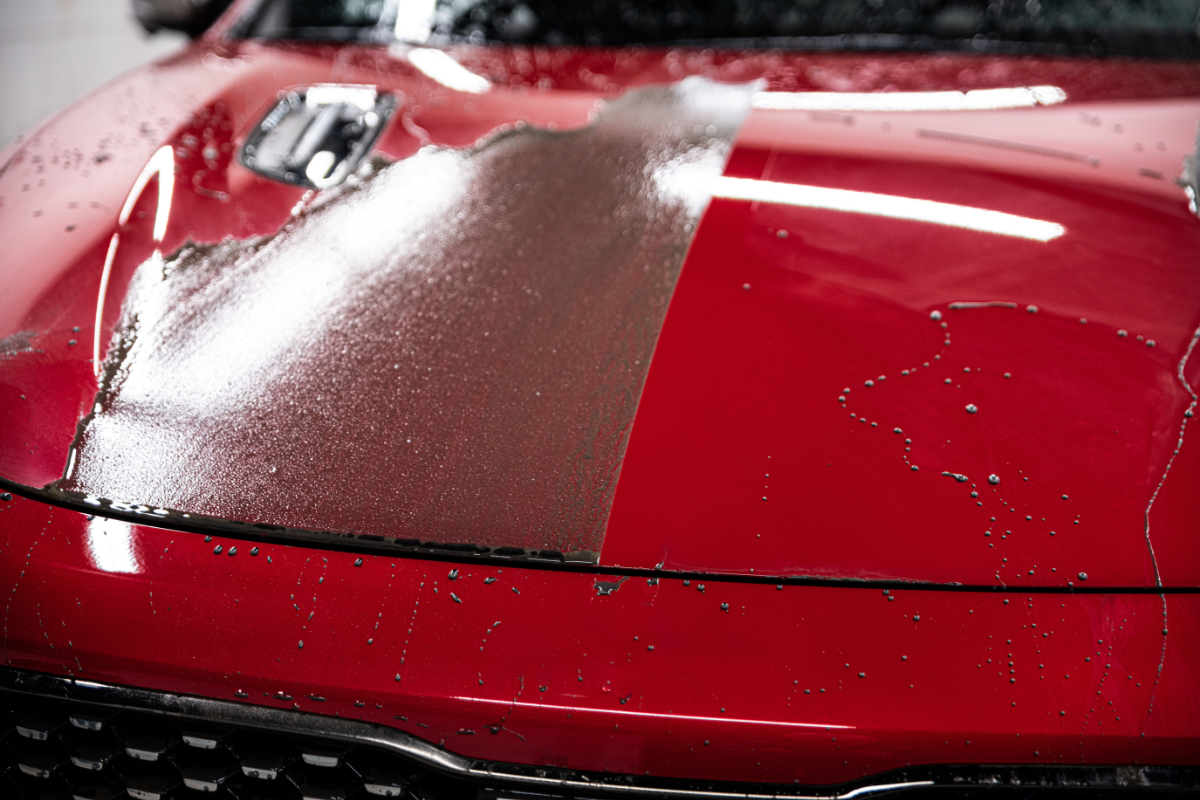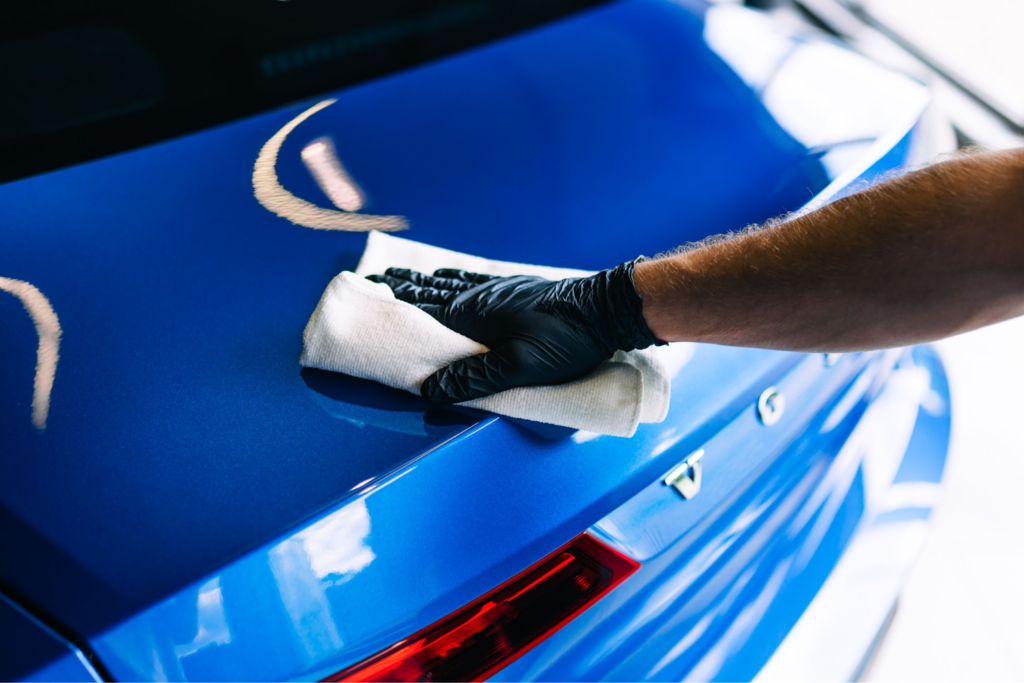How to Prepare Your Lorry for an Expert Ceramic Coating Treatment
How to Prepare Your Lorry for an Expert Ceramic Coating Treatment
Blog Article
The Importance of Ceramic Coating: Protecting Your Car's Exterior With Precision
In an era where maintaining the functional and visual integrity of your car is vital, ceramic layer becomes a pivotal option. This safety layer not just guards against environmental adversities yet also raises the aesthetic charm of your auto. With its special bonding properties, ceramic covering offers a degree of defense that far exceeds traditional waxing approaches. Just how precisely does it achieve such exceptional results? As we explore the nuances of its application and contrast it to various other choices, one can not aid yet wonder concerning the specifics that make this innovation vital for modern-day vehicle treatment.
Advantages of Ceramic Coating
When it involves preserving a car's aesthetic allure, ceramic finishing provides significant benefits. This innovative safety layer supplies a durable guard versus ecological impurities, including dirt, grime, and hazardous UV rays. By creating a semi-permanent bond with the lorry's paint, ceramic coverings properly avoid oxidation and fading, ensuring that the car preserves a shiny, showroom-like surface for a prolonged period. This not just enhances the automobile's aesthetic allure however also adds to its long-lasting value.
In enhancement to its safety high qualities, ceramic finish supplies impressive hydrophobic residential properties, triggering water and various other fluids to bead off effortlessly. This attribute simplifies the cleansing process, as dirt and debris are less likely to abide by the surface, decreasing the frequency and effort required for upkeep. Moreover, the covering's resistance to chemical discolorations from acidic pollutants like bird droppings and tree sap is another noteworthy advantage, minimizing prospective paint damages.
Ceramic coatings also boost scrape resistance, providing a layer that can absorb small abrasions and swirl marks. This feature is particularly valuable in preserving an immaculate surface, minimizing the chance of noticeable imperfections and protecting the integrity of the car's paintwork gradually.

Just How Ceramic Layer Works
Comprehending the auto mechanics behind ceramic coating reveals its efficiency as a protective option for automobiles. Ceramic coatings are essentially fluid polymer applications that chemically bond with a vehicle's factory paint, producing a safety layer. This layer offers as an obstacle against environmental impurities such as dirt, crud, and ultraviolet rays, which can weaken a car's exterior over time. The key part in ceramic finishing is silicon dioxide (SiO2), which originates from quartz crystals and is understood for its remarkable solidity and longevity.
Application of ceramic layer involves a precise process. This guard enhances the automobile's gloss and hydrophobic buildings, helping with easier cleansing by creating water and impurities to bead and slide off easily.
Moreover, the layer's molecular structure offers resistance to small scrapes and chemical discolorations. Unlike waxes or sealers that rest on top of the paint, ceramic finishes integrate with the surface area, supplying long-lasting security. This integration is essential to its effectiveness, ensuring the car's coating stays excellent for many years.
Contrasting Ceramic Coating to Alternatives
In the realm of automobile protection, ceramic finish stands as an awesome alternative when compared to traditional alternatives such as sealers and waxes. While waxes offer a short-term glossy surface, commonly lasting only a couple of weeks to months, ceramic finishes provide a longer-lasting solution, commonly enduring for years. This toughness is associated to the chemical bonding that takes place when ceramic coatings are applied, forming a solid layer that is immune to environmental threats.
Contrastingly, sealants, although more resilient than waxes, still disappoint the durable security provided by ceramic finishings. Sealants can typically last for approximately a year, supplying an artificial shield against specific components. Nevertheless, they lack the exceptional hydrophobic homes and UV defense that ceramic coatings provide.
Moreover, ceramic coverings provide improved scrape resistance, which neither waxes neither sealants can efficiently match (ceramic coating). This is particularly advantageous in preserving an automobile's immaculate appearance. Furthermore, ceramic layers streamline upkeep initiatives by minimizing the adherence of dust and gunk, consequently assisting in much easier cleansing. In summary, while typical waxes and sealers offer standard defense, ceramic finishes offer a thorough, long-term solution that dramatically enhances and maintains the automobile's exterior surface.
Application Process Explained
Applying ceramic finishing to a car calls for a careful process to make websites sure ideal outcomes and sturdiness. As soon as cleaned, the automobile is dried out and brightened to remove read here any imperfections, as any existing scrapes or swirls can end up being extra obvious after the coating is applied.
Complying with surface area preparation, the application of the ceramic finish starts. Making use of an applicator pad, the ceramic covering is used in small sections to make certain even coverage.
After application, the finishing calls for a specific treating duration, throughout which the automobile needs to be safeguarded from water and impurities. This treating process can vary relying on the item but normally ranges from 24 to 2 days. Inevitably, this comprehensive process is critical in attaining a shiny and resilient coating.
Upkeep Tips for Longevity
To preserve the longevity of a ceramic finish, adherence to a disciplined maintenance routine is vital. Normal cleaning is paramount; use a pH-neutral vehicle shampoo and soft microfiber gloves to stay clear of abrasions. Avoid automated auto washes, as their extreme brushes can jeopardize the finishing's honesty. Instead, choose for a hand clean to make certain complete yet gentle cleaning.
Post-wash, drying the car with a tidy microfiber towel More Info prevents water places that may deteriorate the covering gradually. Furthermore, apply a ceramic finish booster every couple of months. These boosters reinforce the hydrophobic residential properties and improve the covering's protective abilities, ensuring it remains reliable versus pollutants.
Bear in mind that car park locations play an important role in upkeep. ceramic coating. Whenever feasible, park in shaded locations to lessen UV direct exposure, which can gradually damage the layer. For long-lasting storage, think about making use of an automobile cover for included protection against environmental elements
Conclusion
In final thought, ceramic layer offers as a vital protective layer for automobile outsides, supplying lasting defense against ecological aspects such as crud, dirt, and uv rays. Comprehending the application procedure and adhering to maintenance recommendations are necessary for making best use of the long life and performance of ceramic layer.
When it comes to preserving a car's visual appeal, ceramic layer offers significant advantages. By creating a semi-permanent bond with the lorry's paint, ceramic layers properly stop oxidation and fading, making sure that the cars and truck keeps a shiny, showroom-like surface for a prolonged period. Ceramic coatings are essentially liquid polymer applications that chemically bond with a cars and truck's manufacturing facility paint, creating a protective layer. In recap, while traditional waxes and sealants supply fundamental security, ceramic layers present a comprehensive, lasting remedy that significantly enhances and maintains the car's exterior surface.

Report this page